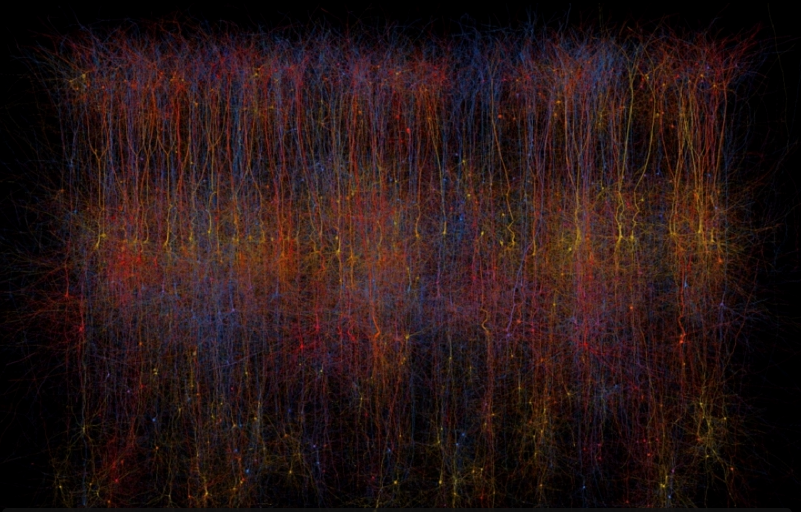

If you ever wanted to know what was going on inside the brain of a rat, you’re in luck. Neuroscientists have been able to simulate the circuitry of a sand-grain-sized piece of rat brain with the help of a supercomputer. The simulation of this tiny area of the rat’s brain represents 31,000 brain cells that are connected by about 37 million synapses, and it’s one of the most complex models yet, with much more elaborate mathematical models of each cell than previous brain simulations.
The results were published today in the journal Cell. The model, which can be explored for free online, is the first major result for the controversial Blue Brain Project, a research initiative launched in 2005 whose goal is to build a computer simulation of the human brain. However, its intentions have not been backed by most of the neuroscience community, and these latest results are unlikely to persuade them.
The Blue Brain Project, which is led by neurobiologist Henry Markram, hopes to one day create a complete simulation of the human brain by incorporating information about the 3D shape of a neuron as well as its biological and electrical properties. The simulation that the researchers achieved involves a tiny region of circuits in the rat’s primary somatosensory cortex—an area of the brain that receives sensory information about what the rat’s whiskers and other parts of the body came in contact with.
Markram believes this type of simulation can provide new insights into the brain’s circuitry and could present new ways to perform experiments by manipulating the neurons in the simulation and seeing the results, instead of doing a real experiment. Many critics, however, are skeptical over the simulations’ ability to actually provide any new information compared to results achieved via other simulations of neural circuitry that are more abstract but take up a whole lot less computing power and resources, reports Nature News.
A team of hundreds of scientists met last year and signed a letter that claimed the Blue Brain Project was poorly run, and didn’t have a strong enough scientific basis. This letter, and two reviews from scientists not involved with the project that followed, caused changes within the projects administration, including the amount of control that Markram had, according to a report by Science.
Further, simulating this tiny piece of rat brain requires the supercomputer to run a billion calculations every 25 microseconds, and simulating the human brain would require a billion times more than that, Markram told Nature News. Whether or not he will achieve this goal and the insights that simulation could hold remains to be seen. But, despite the criticism he has received from other neuroscientists thus far, Markram still plans to reach his goal. “This is a big challenge for supercomputers, but we’re working very closely with IBM to improve the technology.”
